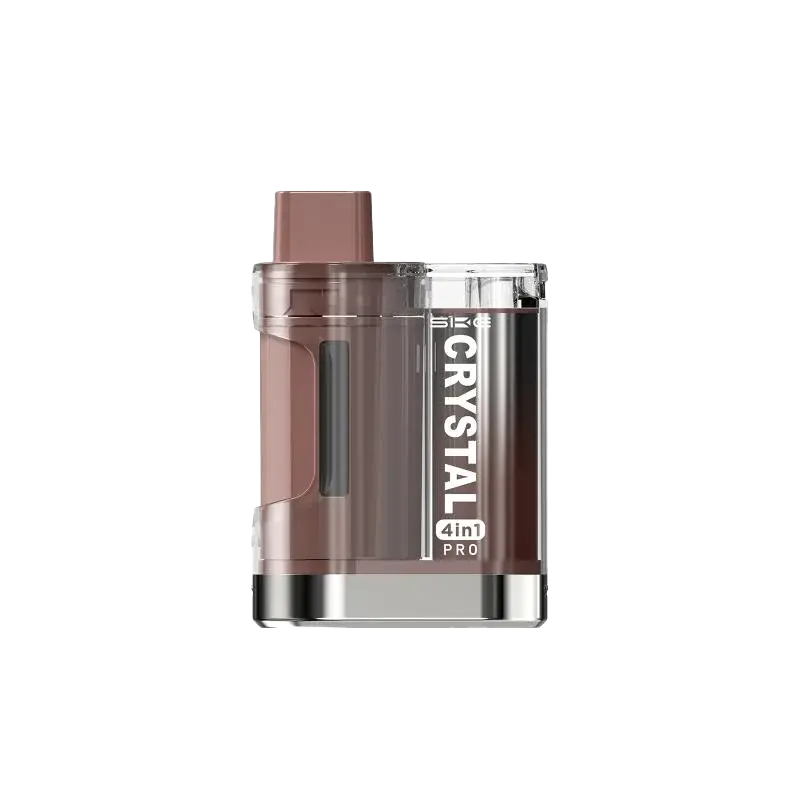Can You Bring a Vape on a Plane? Essential Guide for Vapers
10/12/2024, 5:30:13 PM 3676
So, you're prepping for a flight, and one thing is looming over your head — can you bring a vape on a plane? It's a common concern among travelers who don't want to leave their trusty vape gear behind. The short answer is yes, but — as with all things in air travel — there's a lot you need to know before packing that vape pen on a plane.
Can You Bring a Vape on a Plane?
Let's break down what you need to know from TSA guidelines to country-specific regulations.
TSA Regulations for Vapes
When flying with a vape pen on a plane, the first thing to consider is how the Transportation Security Administration (TSA) views vaping devices. Here's a deeper dive into each critical point:
1. Carry-On Only
TSA requires all vaping devices, whether vape pens or larger mods, must be stored in your carry-on luggage. Packing your vape in checked baggage is a big no-no. Why? It's because the lithium-ion batteries possibly pose a significant fire risk, particularly when they're packed into a checked bag where no one can monitor them.
Lithium-ion batteries are prone to overheating and, in extreme conditions, may catch fire or explode, particularly when damaged or they experience a short circuit in your luggage. By placing your vape in your carry-on, you reduce the risk of an uncontrolled fire, as cabin crew are equipped with fire-suppression systems and trained to handle emergencies swiftly. If you pack your vape in checked luggage, your bag will likely be flagged, inspected, and your vape device confiscated.
2. Lithium Battery Limit
Each lithium-ion battery you're carrying must have a watt-hour (Wh) rating of 100Wh or less. This rule usually covers most vape pens and smaller mods, but for those using more advanced setups, please check your battery specifications before flying.
To calculate watt-hour (Wh) ratings, use this simple formula:
Watt-hours (Wh) = Volts (V) x Ampere-hours (Ah).
For instance, if your battery is 3.7V and 2500mAh (2.5Ah), its watt-hour rating would be 9.25Wh — well within the TSA's 100Wh limit. However, high-powered mods with larger batteries might exceed this threshold, which could lead to confiscation at security checkpoints.
Additionally, please store spare batteries in a protective case and pack them in your carry-on to ensure they don't come into contact with metal objects, which could result in a short circuit. It's always a good idea to bring only the batteries you absolutely need to minimize risks.
3. E-Liquids and Nic Salt
So, can you bring vape juice on a plane? Under TSA rules, any liquids — no matter e-liquids, nic salt, or other vaping-related liquids — must be stored in containers no larger than 3.4 ounces (100 ml). All liquid containers should be placed in a single, clear, quart-sized bag along with your other liquids.
If your bottle of e-liquid exceeds the 100ml limit, it'll likely be confiscated. It can be frustrating, especially if you've packed a large quantity for a long trip, so it's a good idea to portion out smaller amounts into compliant bottles. Tightly secure the caps and place them in sealed plastic bags to prevent messes.
4. Vape Activation Prevention
A major concern for the TSA when it comes to vape devices is accidental activation during the flight. Most modern vape pens and mods have built-in safety functions, like lockable buttons or automatic shut-off functions, but not all do. To avoid any mishaps, please ensure your vape is turned off and securely stored before heading through security.
If your device doesn't have a locking feature, consider disconnecting the tank or pod from the battery and wrapping both in protective material to prevent accidental activation. Many vapers prefer to remove the batteries from their mods entirely for an extra layer of safety. If traveling with rebuildable atomizers or coil-building kits, be ready to explain any wires, coils, or tools in your carry-on.
International Vape Regulations
Traveling with your vape pen on a plane can get more complicated when crossing international borders. Each country has its own rules regarding the sale, use, and importation of vaping products, and some are far stricter than others.
1. Countries with Vaping Bans
There are several countries where vaping is outright banned, both in terms of sales and personal use. For instance, in Singapore and Thailand, possession of a vaping device can result in severe penalties, including hefty fines or even imprisonment. Thailand has one of the most strict vaping bans, where tourists have been detained and fined for simply carrying a vape.
In India, the government implemented a nationwide ban on the manufacture, importation, transport, sale, advertising, and distribution of e-cigarettes, and possession could lead to legal issues. Similarly, Australia allows the use of nicotine-containing e-liquid, but only in pharmacies with a prescription, where state and territory laws allow.
Before flying to any country, it's critical to check their specific laws on vaping. In some places, customs agents might confiscate your vape device even if it's for personal use. Websites for consulates or travel advisories often provide up-to-date information about vaping laws in various countries.
2. Countries with Vaping Restrictions
Other countries have restrictions on vaping products, particularly regarding public spaces. In Japan, for example, nicotine-containing e-liquids are considered a controlled substance and can only be purchased if registered as a medicinal product. However, non-nicotine e-liquids are available and legal for use.
Countries in the European Union have standardized vaping regulations under the Tobacco Products Directive (TPD), which limits the maximum nicotine concentration to 20mg/ml and restricts the size of e-liquid bottles to 10ml. Vaping is legal in most public places in Europe, but please be cautious when traveling through airports or across borders, as individual countries may have slightly different interpretations of these rules.
3. Bringing Vapes Into Vape-Friendly Countries
If you're heading to a country where vaping is legal, such as the U.K. or Canada, you're mostly in the clear. However, please familiarize yourself with local laws regarding vaping in public spaces or at specific venues, like airports. For instance, in some regions, public vaping is treated like smoking and is banned in certain areas, including transport hubs.
International vape regulations can vary dramatically, so always do your homework before packing your gear. It's not just about getting through security — it's about understanding the laws in your destination to avoid potential legal trouble.
How to Bring a Vape on a Plane?
Knowing exactly how to pack a vape and prepare for the journey is crucial. Airlines, especially those operating in and out of the U.S., have strict rules around what you can bring in your luggage, and vape gear is no exception.
1. Keep Your Vape in Your Carry-On
It's a must to pack your vape in your carry-on bag. Never put it in your checked luggage. The TSA and most international aviation authorities forbid storing electronic devices with lithium-ion batteries, including all types of vape devices from small pod systems to larger mods, in checked baggage due to the risk of fire.
2. Store E-Liquids Properly
Just like any other liquid, vape juice is subject to TSA's 3-1-1 rule:
- Each liquid container must hold 3.4 ounces (100 ml) or less.
- All your liquids, including e-liquids, must fit inside a 1-quart-sized, clear, resealable plastic bag.
- You're allowed 1 bag per passenger.
Double-check your liquid volumes before heading to the airport, as forgetting to do so may result in TSA confiscating larger bottles at security.
Also, remember that changes in cabin pressure during the flight may cause vape juice to leak. To prevent messy surprises, pack your e-liquids in a sealed plastic bag and consider leaving a small air gap in the bottle to allow for any pressure expansion. Alternatively, use leak-proof bottles designed specifically for travel.
3. Pack Spare Batteries Safely
Spare batteries, especially for vapers using mods, are a common carry-on item, but you'll need to pack them safely. Lithium-ion batteries are prohibited from being loose in your carry-on without proper protection.
- Use a battery case: Always store spare batteries in a dedicated battery case to prevent them from touching metal objects.
- Limit your batteries: While there's no strict limit on quantity, it's best to bring just a few spares under 100Wh each and check their specs before flying.
Keeping batteries safe and properly stored is crucial to a smooth airport experience, and failing to pack them correctly could lead to confiscation or delays.
4. Disassemble Your Vape Device
If your vape has multiple components, like a mod with a tank, it's a good idea to disassemble the device before packing it. Remove the tank or pod, separate it from the battery, and confirm there's no liquid in the tank. Some vaping devices have large batteries that could attract extra scrutiny, so keeping everything neatly separated shows security officers that you've packed responsibly.
If your mod contains any extra parts — like coil-building tools or spools of wire — store them separately in a clear bag. Although these items are usually allowed, they might raise a few eyebrows during screening, especially in countries where vaping isn't common.
5. Prepare for Airport Security
When you approach security, be ready to remove your vape from your bag and place it in a bin, similar to how laptops or other electronics are screened. TSA officers may ask you to show that the device works by turning it on, especially for larger, more powerful ones. Verify your battery is charged enough to power on if needed, but remember you're not allowed to charge vape devices on the plane.
Security staff have seen plenty of vape pens on planes by now, so don't worry if yours gets a little extra attention. As long as you've followed the packing rules and are polite, you should pass through without issue.
Can You Vape at the Airport or on a Plane?
So you've successfully packed your vape pen and made it through security. But here's the next question — can you use your vape pen at the airport or while flying? The answer, unfortunately, is almost always no. Here's what you need to know:
1. Vaping at the Airport
Most airports around the world treat vaping the same way they treat smoking, which means vaping is banned in the terminal, just as smoking, unless there's a designated smoking area. Some airports still maintain these areas, often located outside or in ventilated sections. However, many airports have phased them out, leaving vapers with few options.
- U.S. Airports: In the U.S., airports like Los Angeles International Airport (LAX) and New York's JFK have eliminated indoor smoking lounges, meaning you'll have to head outside to designated smoking areas for vaping. However, airports like Hartsfield-Jackson Atlanta International Airport still maintain smoking lounges.
- International Airports: Internationally, the rules vary widely. For instance, Dubai International Airport has a few smoking lounges where vaping is also allowed. But if you're flying through European airports, you'll find that most have banned vaping indoors completely. Always check the airport's website or ask staff to confirm where (if anywhere) vaping is permitted.
2. Vaping on the Plane
Once you're on the plane, the rules are even stricter. It's illegal to use a vape on commercial flights, regardless of whether it's domestic or international. In fact, vaping on a plane is treated the same as smoking, and the penalties for breaking the rules can be severe.
Why Can't You Vape on a Plane?
Lighting up your vape at 30,000 feet isn't just frowned upon — it's strictly prohibited.
The primary reason boils down to safety and regulations. Vaping devices produce vapor that can be mistaken for smoke, potentially triggering smoke detectors and causing unnecessary panic among passengers and crew. Imagine the chaos if an alarm goes off!
Moreover, airlines have to adhere to stringent international aviation laws. The regulations classify vaping similarly to smoking traditional cigarettes, which have long been banned on flights due to fire hazards and health concerns related to secondhand smoke.
There's also the issue of air quality within the confined cabin space. Airplanes recycle air, and introducing vapor clouds can irritate or trigger allergies for some passengers. Airlines aim to maintain a comfortable environment for everyone onboard, and unrestricted vaping could compromise that goal.
Getting caught vaping on a plane can result in hefty fines, flight diversions, or even legal action upon landing. It's slippery from seeking momentary relief to facing serious consequences that could ruin your trip.
So, can you bring a vape on a plane? Yes, but it comes with important rules and guidelines that you need to follow. From ensuring your vape is packed in your carry-on and adhering to TSA's regulations on lithium-ion batteries, to being aware of international vaping laws, traveling with a vape requires a bit of preparation. Then you'll be all set for a smooth journey with your vape gear safely in tow!
 United Kingdom
United Kingdom  Russia
Russia  Germany
Germany 
















